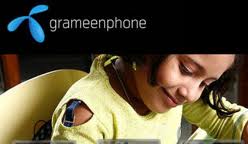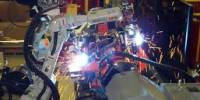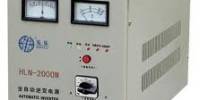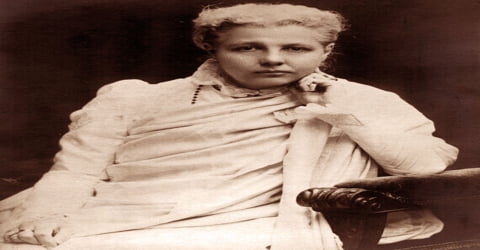Executive Summary:
GrameenPhone Ltd. (GP) is a highly growing company in Bangladesh. Operation and Maintenances department job are tricky and advancer job. Grameenphone is height coverage’s of the country. So GP network good than other Operator. GP Engineer they are very much efficient about their work. They have to work at mid night. They always try to provide good network services in any situation. The total quality control of the network depends on the engineer effort. The engineer done the preventive maintenance (PM) of the different side because of good quality network provides. On the PM time if any fault then the Engineer solve the problem. Optical fiber plays a very important role in Grameenphone transmission network. Optical fiber has created the most important part of the backbone ring. At the same time optical fiber has been used to have new coverage. Both BTS and trunk traffics are connected by this optical fiber. Some site does not need the Generator. Some site provides more battery backup. AC cans proper distribution as per requirement of BTS room Load. Report second part is base on analytical of customer satisfaction about the GrameenPhone network. In satisfied question test the mean is 1.457. The standard deviation 0.5054 and standard error mean 8.543. In the 95% confidence level lower value in -33.716 and upper value is -33.369. It is one tail test so we can say the Grameenphone customers are not satisfied using the connection. Quality of network the standard deviation 0.8382 and standard error mean 0.1417. In the 95% confidence level lower value in -32.945and upper value is -32.39.The network are not very much quality full. The standard deviation 0.3824 and standard error mean 6.463. In 95% confidence level customer said people face some problem when talk other operator. The mean is 3.942. The standard deviation 0.5913 and standard error mean 9.994. In the 95% confidence level lower value in -31.260 and upper value is -30.854. It is one tail test so we can say the Grameenphone network coverage is good. So most of the respondent said the Grameenphone provide the crystal clear sound the mean is 3.485. The standard deviation 1.0110 and standard error mean 0.1709. Disconnect question mean is 2.5429. The standard deviation 0.8859 and standard error mean 0.1495. In the 95% confidence level lower value in -32.761 and upper value is -32.1528. It is one tail test so we can say the Grameenphone network some time disconnect. Because the standard error is higher than the standard deviation. On the other hand the confidences level different very low about the question. So most of the respondent said the Grameenphone call most of the time disconnect. Although some problem but from the study we can say the GrameenPhone customers are satisfy about GrameenPhone network.
Background of the Study:
After completing of all require course of BBA program of EasternUniversity it is a vital part of the study to get involved in a practical professional environment for three months. Internship is one of the requirements of the BBA Program. It is more important for my future job field. The gather knowledge which I got from the internship period is amplification on my future job.
Purpose of the report:
The purpose of the internship report is gather practical knowledge on the work field. For internship report purpose I can know many think about the GrameenPhone operation and maintenance process and how they can work on the department. I also know how they can process their work on the field. It all over technical part I also know much technical knowledge about the operation.
Scope of the Study:
This study tries to focus only GrameenPhone Operation and maintains department. There are many scopes to study in hare but it is not possible to concern about all of the matter very few times. I am total concern on the site maintain and optimization of GrameenPhone as well as the customer satisfaction of the GrameenPhone network.
Limitations:
Although I am business students but they assigned me in their technical sites. As a business student I have done my internship on the GrameenPhone operation and maintains (O&M) department. Time as well as collect appropriated data. Data are available but they can not provide because the secret of the technical soft.
Sources of Data Collection:
Data is gathered from different sources, which is the foundation of research. The search for answers to research questions call for collection of data the data collection beings after a research problem has been identified and research design/plan chalked out while decaling about the method of data collection to be used for the study data are facts, figures and other relevant materials past and present serving as bases for study and analysis.
Two types of data should be kept in mind in case of collection. They are as follows:
A) Primary data.
B) Secondary data.
A) Primary data: Primary data are generated when a particular problem at hand is investigated by the researchers employing mail questionnaires, telephone surveys, personal interviews, observations and experiment.
B) Secondary Data: The secondary data’s are collected from the Grameenphone website. The website is internal as well as external website. I also collect data from the official paper.
Methodology:
When I join my internship at list 10 to 15 days I observer all of the work and I also think how I can do that works and which site I prepare my report. Then I communicate my GrameenPhone supervisor about my internship report topic after I also talk my University supervisor then I can fix my internship report topic. Then I collect my relevant data from the website as well as offices paper. I also collect data from the vendor through the conversation. They can provide the paper document. It is most of the part of the secondary data collection part. Next I prepare a questioner and talk my University supervisor he correct the questioner. Then I collect information through questioner from the GrameenPhone Employ as well as subscribers. After collect all of primary and secondary data then I process my data. For the process purpose I help the soft ware of the SPSS. In the soft ware I input the data the soft ware automatic prepare the different information about the statistic. Then the data I can analysis which is more correct for the company which in not need. Then I can findings of the report problem. That’s the process I can prepare my internship report.
Job responsibility:
Reporting: I had to report the head of JSC Mr. Istiak Muhammad Jubayer before 9 A.M. I had to give a report in every Sunday for the last week work activities. I had to also present that report in meeting time. This is called weekly report. The weekly meeting will be held on every Sunday evening.
My works: My working pattern like as Preventive maintenances( PM) support as a Engineer, Civil work site visit, Spare room maintains, Generator serving visit, AC servicing visit, Generator services provide if elasticity damages, New equipment add if old one fault.
Company Overview:
History of the Company:
November 28, 1996 Grameenphone was offered a cellular license in Bangladesh by the Ministry of Posts and Telecommunications March 26, 1997 Grameenphone launched its service on the Independence Day of Bangladesh November 5, 2006After almost 10 years of operation, Grameenphone has over 10 million subscribers September 20, 2007Grameenphone announces 15 million subscribers.
Grameenphone is now the leading telecommunications service provider in the country with more than 20 million subscribers as of June 2008.Presently, there are about 30 million telephone users in the country, of which, a little over one million are fixed-phone users and the rest mobile phone subscribers.
Starting its operations on March 26, 1997, the Independence Day of Bangladesh, Grameenphone has come a long way. It is a joint venture enterprise between Telenor (62%), the largest telecommunications service provider in Norway with mobile phone operations in 12 other countries, and Grameen Telecom Corporation (38%), a non-profit sister concern of the internationally acclaimed micro-credit pioneer Grameen Bank.
Over the years, Grameenphone has always been a pioneer in introducing new products and services in the local market. GP was the first company to introduce GSM technology in Bangladesh when it launched its services in March 1997.The technological know-how and managerial expertise of Telenor has been instrumental in setting up such an international standard mobile phone operation in Bangladesh. Being one of the pioneers in developing the GSM service in Europe, Telenor has also helped to transfer this knowledge to the local employees over the year. The company has so far invested more than BDT 10,700 crore (USD 1.6 billion) to build the network infrastructure since its inception in 1997. It has invested over BDT 3,100 crore (USD 450 million) during the first three quarters of 2007 while BDT 2,100 crore (USD 310 million) was invested in 2006 alone. Grameenphone is also one the largest taxpayers in the country, having contributed nearly BDT 7000 crore in direct and indirect taxes to the Government Exchequer over the years. Of this amount, over BDT 2000 crore was paid in 2006 alone.
Since its inception in March 1997, Grameenphone has built the largest cellular network in the country with over 10,000 base stations in more than 5700 locations. Presently, nearly 98 percent of the country’s population is within the coverage area of the Grameenphone network.
Grameenphone was also the first operator to introduce the pre-paid service in September 1999. It established the first 24-hour CallCenter, introduced value-added services such as VMS, SMS, fax and data transmission services, international roaming service, WAP, SMS-based push-pull services, EDGE, personal ring back tone and many other products and services.
The entire Grameenphone network is also EDGE/GPRS enabled, allowing access to high-speed Internet and data services from anywhere within the coverage area. There are currently nearly 3 million EDGE/GPRS users in the Grameenphone network.
Grameenphone nearly doubled its subscriber base during the initial years while the growth was much faster during the later years. It ended the inaugural year with 18,000 customers, 30,000 by the end of 1998, 60,000 in 1999, 193,000 in 2000, 471,000 in 2001, 775,000 in 2002, 1.16 million in 2003, 2.4 million in 2004, 5.5 million in 2005, 11.3 million in 2006, and it ended 2007 with 16.5 million customers.
From the very beginning, Grameenphone placed emphasis on providing good after-sales services. In recent years, the focus has been to provide after-sales within a short distance from where the customers live. There are now more than 600 GP Service Desks across the country covering nearly all upazilas of 61 districts. In addition, there are 72 Grameenphone Centers in all the divisional cities and they remain open from 8am-7pm every day including all holidays.
GP has generated direct and indirect employment for a large number of people over the years. The company presently has more than 5,000 full and temporary employees. Another 100,000 people are directly dependent on Grameenphone for their livelihood, working for the Grameenphone dealers, retailers, scratch card outlets, suppliers, vendors, contractors and others.
In addition, the Village Phone Program, also started in 1997, provides a good income-earning opportunity to more than 210,000 mostly women Village Phone operators living in rural areas. The Village Phone Program is a unique initiative to provide universal access to telecommunications service in remote, rural areas. Administered by Grameen Telecom Corporation, it enables rural people who normally cannot afford to own a telephone to avail the service while providing the VP operators an opportunity to earn a living.
The Village Phone initiative was given the “GSM in the Community” award at the global GSM Congress held in Cannes, France in February 2000. Grameenphone was also adjudged the Best Joint Venture Enterprise of the Year at the Bangladesh Business Awards in 2002. Grameenphone was presented with the GSM Association’s Global Mobile Award for ‘Best use of Mobile for Social and Economic Development’ at the 3GSM World Congress held in Singapore, in October 2006, for its Community Information Center (CIC) project, and for its Health Line Service project at the 3GSM World Congress held in Barcelona, Spain, in February 2007.
Grameenphone considers its employees to be one of its most important assets. GP has an extensive employee benefit scheme in place including Gratuity, Provident Fund, Group Insurance, Family Health Insurance, Transportation Facility, Day Care Centre, Children’s Education Support, and Higher Education Support for employees, in-house medical support and other initiatives.
Grameenphone Organogram:
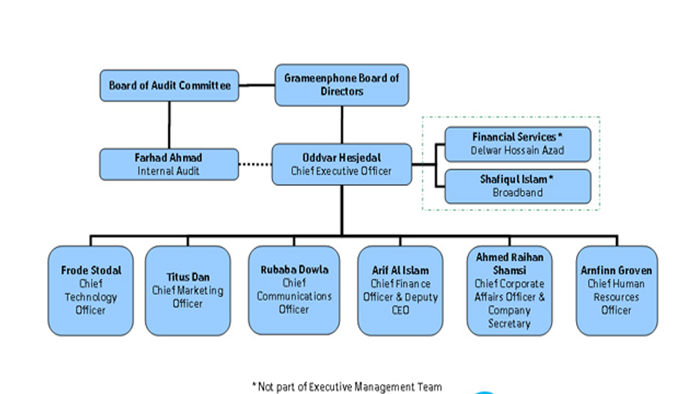
Network Operation Ogranogram:

Regional O&M Organogram:
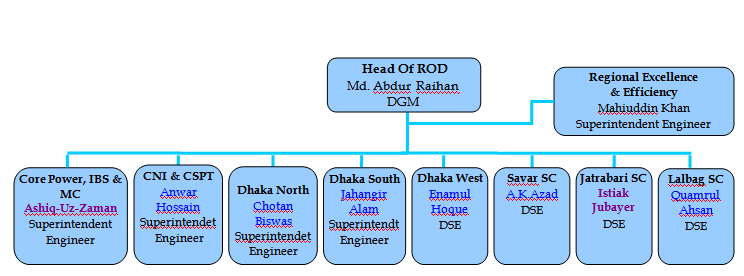
Renewed Vision and Values:
For the first time Telenor is establishing a common vision and set of values for the whole organization. The first launch of the renewed vision and values took place for our operations throughout Scandinavia and Hungary on November 15th.The launch of a common vision and set of values marks a new phase in the development of Telenor as an international company. We are moving from a holding-company approach to a more collaborative united force, where we will stimulate best practice sharing and co-operation between markets while maintaining the local edge and market relevance. Our vision and values will unite the together and deliver the foundation for our enterprise around the world. Our fundamental tool towards becoming truly customer focused.
The renewed vision crystallizes our customer focus as the cornerstone of everything we do: to help our customers get the full benefit of communications services in their daily lives. Telenor’s vision is simple: We’re here to Help. The values spell out how we will serve our customers around the world: Make it easy. Keep promises. Be inspiring. Be respectful.
Making our brands stand out from the competition in a positive, differentiated and relevant way. To succeed as a service company in a very competitive telecommunications industry, we need to have very distinct brands. By delivering on our values we will create relevant, tangible customer benefits and a pointed difference in each of the markets where we operate. These values give us a distinctive personality that will make us stand out.
This renewed vision and values are our internal guidelines and will therefore not be included in communication externally. This implies no external publication of brochures, films or other materials regarding the vision and values.
Our Vision and Values:
How will these values make a difference? Telenor’s vision is simple: We’re here to help. To make this vision a reality, each of us can draw on our values and build them into guiding light behaviors in our workplace, wherever that may be… Make it easy. Keep promises. Be inspiring. Be respectful. What does this mean for our customers, Telenor employees – us – and the company’s shareholders?
We’re practical. We don’t over complicate things. Everything we produce should be easy to understand and use. No waste. No jargon. Because we never forget we’re trying to make customers’ lives easier.
For our customers, making it easy will be addressing some very fundamental customer needs. They need simplicity. Solutions and services that are easy to buy, easy to use and are built to meet their needs. Solutions and services that work well.
For Telenor employees everywhere, this means the following… No jargon, be direct and simple. Show transparency. Push for simplicity in tools and in logistics. Share best practices. Adopt clearly defined roles and responsibilities.
For our shareholders, this will mean cost efficiency and return on investment and a move away from tactical investments to an increased focus on long-term strategy.
Everything we set out to do should work, or if you don’t get it, we’re here to help. We’re about delivery, not over promising – actions not words.
For our customers, this will mean they can build trust in us. The solution or service works – if not, we are there to make it work. They need us to deliver on time, to expected levels of quality, and at a fair price. They need us to be strong on action, not on fine words!
For employees everywhere, this means… We follow through. We never launch something new before it works as it should work. We arrive on time and we deliver on time. We commit to concrete, realistic promises to our customers – and deliver on our promises.
For our shareholders, this will mean that we lead the industry in customer satisfaction, and win industry recognition for follow-through and delivering on our promise.
We are creative. We strive to bring energy into the things we do. Everything we produce should look good, modern and fresh. We are passionate about our business and customers.
For our customers, this will mean they will want to engage with us, will appreciate our innovative and modern approach, will appreciate our future proofed solutions and services, and will acknowledge our category leadership.
We acknowledge and respect local cultures. We do not impose one formula worldwide. We want to be a part of local communities wherever we operate. We believe loyalty has to be earned.
For our customers, this will mean each of them can expect to be treated like an individual. Each of them will feel valued, understood and listened to, and their needs acted upon.
The ranges of services that are available at GPCICs include:
- Internet surfing and e-mailing
- Chatting with Voice, Picture
- Video conferencing
- Computer Composing
- Scanning, Printing
- Commercial Mobile Call
- E-governance services
- GP value added services such as Flexi Load, Ring tones downloading etc.
- Fax
- CD Writing
- Telemedicine services (to be introduced)
- Content on health, agriculture etc.
- Multimedia education for children
- Directory Services
Community Information Centers:
GrameenPhone is rolling out Community Information Centers across rural Bangladesh, giving more than 20 million people the chance to use the Internet and email for the first time. GrameenPhone is teaming up with local entrepreneurs to set up approximately 500 centers. But GP increase day by day their facility.
Other available services in Grameenphone Center:
- Postpaid SIM replacement
- Postpaid reconnection
- Postpaid Migration
- Billing Address change
- Itemized Bill
- Bill / usage / payment information
- Product information
- Duplicate paper
- Refund
- Adjustment
- Ownership transfer
- Wrong account posting
- Complain & query handling
- Bar / unbar
- Signatory change (for company phone only)
- Password unblock
- SIM check
- Temporary disconnection
- Permanent disconnection
- Technical problem
- Faulty SIM Replacement (both pre and post paid )
- International Roaming.
- Welcome tunes configuration
- VSMS ( Voice SMS)
- Thank you bonus
- Welcome tunes configuration
- Edge configuration
- Dual claim
- Voice mail
- Password unblock
- Edge related services
Products and Services Available for Sales:
- Pre-Paid
a) Smile (mobile to mobile)
b) Smile (PSTN)
c) djuice
- Post Paid
a) xplore Package 1
b) xplore Package 2
- Recharge
a) Flexi-Load
b) Scratch Card
- Hardware:
a) Genuine Handsets
b) GPRS and EDGE Modem
c) Accessories ( Charger, Battery etc)
d) Services
e) Public Phone Activation
- Value Added Services:
a) International Roaming
b) EDGE
c) Voice Mail Services
d) Text Messages
Market National and international:
Telenor doing their operation in 12 countries they can provide services many people in those countries. Telenor is a multinational company the Telenor market position:
| Country | Population | Mobile Penetration(30June2009) |
| Malaysia | 27.2 | 96.0% |
| Thailand | 66.5 | 90.6% |
| Philippines | 91.1 | 72.4% |
| Pakistan | 164.2 | 55.4% |
| Vietnam | 85.9 | 63.4% |
| Indonesia | 234.7 | 50.4% |
| China | 1,321.3 | 46.2% |
| Bangladesh | 140.6 | 32.1% |
| India | 1,110.4 | 26.5% |
The Bangladesh Market Information:
| Topic | 2005 |
| 2006 |
| 2007 |
| 2008 |
| Subscribers (mn) | 5.5 |
| 10.8 |
| 16.5 |
| 20.8 |
|
|
|
|
|
|
| |
| Revenue (BDT mn) | 29,473.1 |
| 45,640.4 |
| 54,303.1 |
| 44,561.0 |
|
|
|
|
|
|
| |
| Operating Profit (BDT mn) | 12,601.7 |
| 18,195.3 |
| 16,287.0 |
| 9,741.4 |
|
|
|
|
|
|
| |
| Net Profit/(Loss) (BDT mn) | 6,912.9 |
| 7,484.0 |
| 3,059.8 |
| 380.1 |
|
|
|
|
|
|
| |
| Capex | 26,150 |
| 21,656 |
| 35,763 |
| 14,450.2 |
SWOT Analysis:
SWOT analysis defines that company’s own strength, weakness, opportunity, and threat. It is most needed things for a company that determines its current situation in the market.
SWOT analysis naturally occurred in two factors.
1) Internal Factor
2) External Facto
Strengths:
- Availability of Backbone Network (Optical fibber).
- Financial Soundness.
- Market Leader.
- Brand Name / Grameen Image
- Skilled Human Resource.
- Largest Geographical Coverage.
- Good Human Resource and Infrastructure, installation all over the country through Bangladesh Railway and Grameen Bank.
- Access to the widest rural distribution network through Grameen Bank.
- High Ethical Standard.
Weaknesses:
- Mixture of different cultures is used as an excuse not to solve problems
- Too much inside out thinking in the company.
- Different departments not working together.
- Poor interconnection with BTTB.
- Complicated price structure
- Billing System can’t handle sophisticated billing.
- Absence of Prepaid Offer.
- No international Roaming
- No long-term Distribution/Channel strategy.
Opportunities:
- Economic growth of Bangladesh.
- New and better interconnect agreement
- Huge need for telecom services
- Increased intentional activities in Bangladesh
- Declining prices for handsets
- Future privatization of the fixed network
- New international gateway
- Demand for inter-city communication
- Growth in other operator will give more connection.
Threats:
- More rigid government regulations.
- More influence of competitors on the fixed network
- Change of government might lead to competitors having more clout
- Devaluation of Taka
- National catastrophes.
- Sabotage of installation.
- Non-co-operation of government and fixed PSTN (Public Service Telephone Network).
- Risk of fire in GP’s Installations.
- Price war.
- Non-availability of funds.
- BTTB has limited capacity for interconnections.
Sites maintenance and optimization
Of
GrameenPhone.
Problem statement: The problem statement part it is defines two segments one on descriptive segment another part is customer satisfaction on Grameenphone network. Chapter four is descriptive part of the Grameenphone and second part is done chapter five.
Chapter four problems are describe as describe from. The problem of the chapter four are:
- Sites maintenance problem.
- Proper distribution problem AC, Battery, Module, Generator,
- Civil works problem,
- Power problem.
Chapter five we can know the customer satisfaction of the Grameenphone network. So we can solve some question for the customer satisfaction measurement..
Sites maintenance problem:
Grameenphone is the larger mobile company of Bangladesh. Height coverage’s of the country. The Bangladesh infrastructures very poor. That’s the problem site maintenance problems mainly occur. For bad weather most of the base station have problem. Power is the common problem in our country so very early the equipment damage. For the low power needs many taka for the stabilizer. Some time some one stolen the cable from the BTS room equipment, grounding cable, Power cables Ac grille and other valuable equipment.
Proper distribution problem AC, Battery, Module, Generator, Civil works problem, Power problem:
Under the JSC has more than 300 sites all site has AC but the AC can not distribute proper way. Some site needs 1.5 ton AC but site has 3 ton AC. On the other hand needs 3 ton AC but site has 1.5 Ton AC. For the temperature the BTS room equipment fault very early. Some site needs 2 set batteries but has 1 set battery. Generator does not need some site but has generator. The civil works problem when the site construction. Some sites need the voltages stabilizer but that sites not Voltages stabilizer.
Findings of the Report.
Sites maintenance and optimization of Grameenphone is not a small task. But the engineer done very good job in early time.
Regional O & M. ROM:
Rom is the part of the technical division.
First line Fault handling:
- ROM is the owner of all kind of equipments at sites and any site itself.
- First line fault handling of all kinds of equipment of Transmission, Power and BTS equipments.
- For Handling faults, there is specified Service Level Agreement which is popularly known as SLA (allowed time varies from Fault to Fault) for each type of fault.
- Preventive Maintenance:
- Preventive maintenance means ‘To take initiative to remove all sorts of possible causes of faults before fault appears’
- In other word, PM is called Corrective Maintenance.
- There is specified Preventive maintenance form/check list, which is to be fulfilled while doing any preventive maintenance.
- Preventive maintenance is a periodic routine work, 2 cycles in a year at each site.
- Ensure the security of Optical fiber, coordinating with patrolling team of Admin department.
- Physical Connections of all kinds of PCMs, NE integration:
Hundreds of connectivity is required like, MSC-MSC, MSC DSC, BSC-DSC, ‘BSC-TSC etc. Some connections required to be connected physically after having the software connections. ROM engineers make these physical connections.
- When any new node is integrated with the existing network elements, connectivity required to be established with the new clement and many physical connections required to be made and are done by ROM engineers.
- ROM engineers do capacity up gradation, when required as per Achieve, requirement.
- Whenever new optical transmission link is required to be established, installation and commissioning of interface cards establishing the link is ROM engineer’s responsibility.
- Connectivity/commissioning of PCMs with other operators are ROM engineer’s responsibility on requirement basis.
Fault Handling process flow:
If occur any problem then the engineer going the process. The process is:

Network Operation:
Range of work:
- Operational strategy development and implementation
- OPEX saving initiatives and operational cost optimization
- Performance improvement projects
- Network resource utilization
- Impact analysis from campaigns, monitoring and control
- Network operational process development, monitoring and control
- Performance control and benchmarking
- Security
NetworkOperationCenter.
Range of work:
- 24×7 Network Surveillance and Alarm dispatch
- Service monitoring and 1st level Fault handling for all NE
- Performance monitoring
- Network integration & Capacity optimization
- Technical Support for GP Subscribers & Employees about network problem.
Core Network Operation:
Range of work
- 2nd line Operation & maintenance of Core network platforms (switching, core transmission, Packet backbone, GPRS & BSS)
- Acceptance & participation in related projects
- Software upgrade & update
- Functional Access Control
- Implementation of optimization plan
- System Analysis & improvement.
Service Network Operation:
Range of work
- O&M and 2nd line IN Network Maintenance.
- Pre-Paid Subscriber Data Maintenance.
- Pre-Paid Service Logic Maintenance. O&M and 2nd line Refill Network Maintenance.
- Provisioning of new Refill based Services..
- Pre-paid Tariff Handling and Maintenance.
- Pre-Paid Subscriber Provisioning.
- Pre-Paid Service Provisioning.
- O&M and 2nd level VAS Maintenance.
- New Value Added Service integration & Maintenance.
Operation Support System:
Range of work
- O&M and support of OSS systems
- Ensure future proof systems & inter-operability planning
- Projects deployment & evaluation
- Systems integration and customization
- Integrate network KPI with OSS systems
- Ensure network Access controls through OSS systems.
Quality Assurance:
Range of work
- Process owner for
- Acceptance for
- Rollout activities.
- Technical Auditing.
- Operational risk
- Control.
- Ensure installation
- Material quality.
- Process Developer for
- Implementation &
- Operation activities.
- Trainer for Quality
- Awareness.
Regional Operation & Maintenance:
Range of work
- Field maintenance
- 1st line O&M and PM of all BTS & TX sites
- Fiber network O&M
- 2nd O&M of BTS, TX & Power
- Environmental main ten. Of core sites.
- Spare parts & Fixed asset database maintenance
- Preventive main ten.
Regional Operation & Maintenance:
Range of work
- 2nd line support on BTS, TX/FO & Power and escalate to vendor
- Fault analysis and improvement action
- Competence build-up of ROM staff
- Fibres Network PM & patrolling coordination.
- Spare parts mgt.
- PM control & civil maint of all sites
- Outsourcing projects
- Support to ROM
- Fixed Asset BD main
Range of work:
- First line O&M of all BTS & TX sites (power, TX & BTS)
- Environment maint of core sites
- Fiber network O&M
- Refueling of Gen.
- A/C & Gen maint.
- CSPT/ Customer complain handling.
- Back-up & HW maint. Of core sites.
Regional O&M,
Range of Work (PM Controller)
- Lead the PM activities in region
- Create cost effective quality sense among the engineers
- Ensure quality PM in all sub-centers as per schedule
- Competence development related to PM
- Weekly follow-up & reporting to Regional Head
- Coordination with x-functions to remove snag
- Perform regular sample audit Prepare budget for PM resource.
Range of Work (Core power, IBS & MC)
- Ensure uninterrupted power for 8 core sites
- Maintain standard environment of the 8 core sites
- Ensure quality preventive maintenance including FA compliance
- Cost effective O&M of power system & access network for the IBS,
- Monitoring of Network and OPEX KPI and action for improvement
- Execute planned works of different cross functional teams within timeline
- Ensure refueling of auto generator
- Implementation of cost initiative projects in time
- Ensure payment of vendors within timeline.
Regional O&M, SPMc:
Range of Work (SPM)
- Purchase of spare as per dimension
- Ensure spare as per dimension and SLA
- Repair return of faulty equipments
- Vendor management for timely return of faulty equipments
- Develop process for efficient spare parts management
- Fixed asset management within Networks.
- Ensure HW support for ROM for other departments Work Request.
BTS (Base Transceiver Station):
- Common Faults and Recovery/Removal of Faults for BTS:
- The BTS includes all Radio and transmission interface equipment needed on the radio site to provide connection with the mobile station over the air interface.
- Each BTS operates at a given pair of frequencies
- One frequency is used to transmit signals to mobile station and the other one to receive signals from mobile stations.
RBS (Radio Base Station):
RBS includes all radio and transmission interface equipment needed on the site to provide radio transmission for one or several cell.
RBS is the Ericsson’s product name for the GSM Base Transceiver Station.
RBS Cabinet:
- The RBS cabinet houses up to 12 TRUs plus common equipment needed for serving the cell configuration.
- The double transceiver, dTRU, consists of two transceivers in one unit of the same size as classic single TRU.
- Cable entries for antenna jumpers, transmission cables, and mains power are concentrated on the roof of the cabinet.
- Power supply can be 230 V AC, -48 V DC or +24 V DC.
- RBS 2206 consists of following elements.
- DXU – Distribution Switch Unit
- dTRU – Double Transceiver Unit
- CDU – Combining &. Distribution Unit
- CXU – Configuration Switch Unit
- PSU – Power Supply Unit
- DCCU – DC Connection Unit
- FCU – Fan Control Unit
- IDM – Internal Distribution Module
- OXU – Optional Expansion Unit
BTS Environment control:
Standard Environment is required to be maintained in the Base Station by:
- Maintaining the room temperature at 24°c
- Cleanliness
- Humidity free
- Air tight room
- Flammable item free etc.
Network Elements and Sites Maintained by ROM Engineers:
Transmission Equipments:
1. Optical Transmission
2. Microwave Transmission
3. Optical Transmission Equipment:
- Optical Fiber – Bangladesh Railway Fiber network, Highway Fiber Network, Overhead Fiber network, Leased Fiber
- Siemens-hiT 7070, SMA4
2. Microwave Transmission Equipment:
- Siemens – SRAL, SRAL XD, SRT 1C, SRT1F,SRA S3, SRA S4
- NEC – Pasolink, Pasolink +, NEC 300S,PasoNeo
- Ericsson – Minilink
The Standard Forms / Check list Forms:
- Preliminary Acceptance Test (PAT) form
- Preventive Maintenance (PM) form
- AC servicing Check list form
- Generator Servicing Check list form
- Rectifier Setting Check list form
- Technical Review form (TR form) for Collocation and 3rd cabinet integration
- Generator Commissioning form
- AC fault inspection Check list for
BTS Equipments: Ericsson can provide all RBS equipment all of the RBS equipment needs good temperature 24°c the RBS version are:
- RBS 2202 -GSM 900 “
- RBS 2 102 -GSM 900, Out Door BTS
- RBS 2206 -GSM 900, GSM 1800
- RBS 2 106 -GSM 900, GSM 1800, Out Door BTS RBS 2308 T GSM 900, GSM 1800, Indoor BTS
External Power Maintenance:
All sorts of Power maintenance are our responsibility. When commercial power is unavailable, power backup ensuring by generator running is one responsibility of ROM engineers.
When any fault occurs with the commercial power, Energy meter/Service line/Transformer related or what else, its ROM engineers’ responsibility to take care for removing the fault and ensure power to site.
First line Maintenance of Battery, Auto Generators, Portable generators, Fuel loading at all auto generators are ROM engineers’ responsibility
Power Equipments:
a) Rectifier
b) Battery
c) Air Cooler
d) Surge protector
e) Energy Meter
f) Distribution Board
Rectifier:
- DELTA
- BSMCBD
- ELTEK Flat pack
- Ascome
- BSME com ten
BATTERY:
In case of AC main power unavailability back-up batteries are used in GP network. The batteries are VRLA (Valve Regulated Lead Acid) batteries. We use different brands of batteries, but the major brands are:
- OERLIKON (ERICSSON) – for switch
- YUASA-for BTS
- GNB- for BTS
- NARADA-for BTS
- GNB for BTS.
- HAWKER for BTS
In our BTS most of the cells are 2 volt cell some sell 1.5 voltages. Depending upon the rack the battery can be arranged in different tier. But the important thing is to get 48 volt by series and parallel combination. Specification.
2 V (DC), 330 AH (Each)/ 500 AH
One battery bank = 24 battery. – 48 V (DC), 330 AH/ 500 AH
24 connected with series
System= -48V, 330 AH
Float Voltage =-54.0V
Boost Voltage = -54.0 V (No boost voltage required)
Float voltage setting and boost voltage setting varies depending upon various battery manufacturer. ‘Like for GNB battery the float voltage setting is at 55.2 and boost voltage setting is 56.4.
Air Cooler:
American Air – Capacity 4 to 5 tons, Used only for Core sites Hayes and Heir,
Whirlpool, Coolinc, General, Unitech, LG – Capacity – 1.5 ton to 2 ton; used for BTS.
Air-conditioner operation based on time. ACP will operate air conditioners based on time period defined by user.
Delay Time (applicable for ACP-single AC & ACP-double AC)
There will be an adjustable delay time (start from zero) for starting the air conditioner at any condition.
Temperature delay time (applicable for ACP-double AC)
There will be an adjustable delay time (star from zero) for starting the second air conditioner.
Alarm generation (applicable for ACP-single AC)
Incase of any failure of the ACP or high room temperature (adjustable), there should have one alarm facility through the potential free contact point.
ACP Should have bypass option. At bypass there will be no controlling functionality of the ACP, it will directly pass the AC power to output terminal for operation of the air conditioner.
Technical information and operational logic:
Technical Information (applicable for ACP-single AC & ACP-double AC)
Operational Voltage 100VAC-300VAC
Operational Temperature 2°C – 70°C
Continuous Output Load 25 AMP Max
Maximum Peak Current 65 AMP (for ACP-double AC 45 AMP/each AC)
Display Type LCD Display and LED indicators
Mounting Wall Mounted with necessary arrangement
Alarm option with potential free relay contact (Incase of failure of ACP and high room temperature
Tolerable measures (+/-) 3% from actual value for time,
e) Voltage Stabilizer:
- Green Power
- Newtech
- Galaxi
- Navana.
Capacity 8.5 KVA to 40 KVA, used in BTS and core sites, Need basis.
Generator:
ATS Generator- SDMO, Tempest, Pramac, WSM, FGWILSON, Himunisha
Capacity – Core Sites, 50KVA to 200KVA; Need Basis
Portable generator – Honda, WFM
Capacity – 7.5 KVA to 8.5 KVA; Used for BTS power back up.
Some site has heavy generator but it is not needs to the GP can give the battery backup. So the more money saves for the generator purpose.
Grameenphone network two types of generators are used:
- Auto Generator
- Portable generators
There are several brand auto generators
- SDMO (supplied by Electro Mechanical Services Limited)
- Pramac (Supplied by Rahimafrooz energy Services Limited)
- Tempest (Supplied by Cross world limited)
- WFM(Supplied by Energy Pac power Generation limited)
Auto Generator.
The basic function of alternator is same in Portable Generator and Stand by Generator.
Other differences:
AVR (Automatic voltage regular) is use in auto Generator but not at portable Generator.
The controlling system of Auto Generator is Micro processor based system, All stand by Generator run by Diesel and all portable Generators run by patrol or Octane. So Engine
Auto (Generator is Diesel Engine and portable Generator is patrol Engine. Diesel Engine use for heavy duty and Patrol Engine is use for non commercial purpose. Auto generator is water cooling system and portable Generator is air cool or natural cooling system. Auto generator is three phase and portable Generator is single phase. There is Temperature sensor, Lube oil pressure sensor, over speed sensor at the Auto Generator but at Portable generator.
IF cables and tributary connectors:
1. Check if there any alarm like OPEN Cable or Cable over load
2. If any surface damage or abnormal appearance is found on the following items, replace it. Items to be inspected are:
- The connectors of jumper cable between ODU and IDU
- Jumper cables
- Grounding of feeder
- IF cable connector
- Power supply cable and connector
- Traffic IN/OUT cable and connectors.
Equipment instruction manual:

Spare Parts Management (SPM):
The quality of your entire after sales service depends primarily on the supply quality of spare parts for your customers, service technicians, and workshops. Spear part management (SPM). They have needed much equipment so they can maintain the SPM. Every sub center has the spear room. All of the technical equipment kept on that room. When the new equipment came from the head offices then the check all of the equipment serial number as well as the assets number. All of the equipment entry on the entry paper when faulty equipment came from the site then the engineer take blue tack ns on the blue tack add the number of the faulty equipment serial number and assets number.
Supply quality is by no means defined solely by the speed of supply; it also depends on the costs involved. It is necessary to achieve a balance between low spare parts inventories and high spare part availability.
In many companies, spare parts supply is inadequately organized, and there is confusion about stock levels and
the delivery ability of suppliers. Additionally, there are often insufficient local resources available, or there is no global network to cover the short-term needs of customers rapidly and efficiently.
The solution lies in ensuring the economical availability of required spare parts. We can support you here as well – through well-organized Spare Parts Management of Siemens Industrial Services.
Your benefits
- Security of supply for spare parts.
- No need to keep own resources for short-term supply in selected countries
Reduced administration expenses. - Noticeably improved service quality and increased competitiveness
- Faster supplies of spare parts through shorter procurement lead time Details
- Our logistics specialists organize your spare parts supply processes and manage orders and deliveries. Depending on your individual needs, the following logistics sub-processes and tasks are relevant:
- Order processing – from order entry, processing, disposition through purchasing to order tracking and reporting using appropriate performance measures.
- Integration of storage processes – including management of (your or Siemens) spare parts through bundling, as well as the physical take-over of customer storage facilities (on consignment) and the possibility of integration in your existing storage infrastructure.
- Network management – from the configuration and use of information networks through the central disposition, process control, and priority-oriented stock management, to the integration of your own and other regional storage facilities on-site.
- Spare Transfer (Spare Transfer functionality).
- Spare Receive (Spare Receive functionality).
- By clicking on each functionality node user can get related user interface for this functionality.
- Faulty Element Inventory module is divided into three functionalities:-
- Record Faulty Element: – This functionality is used for replace a faulty element by a spare element and send this faulty element to the central ware house..
- Receive Faulty Element: – This part is used for acknowledge that faulty element is received by central warehouse.
- Processes Faulty Element: – This part is used for process a faulty element.
Repair Service – more than just professional repair Our Repair Service comprises services that for technical and financial reasons must be performed in service centers and laboratories. Particularly for makers of electronic and electromechanical components and equipment, our Repair Service enables them to have repair performed on their products worldwide both during the warranty period and after it expires. If you don’t have service points in the markets you serve, then we can help you to avoid the high transport costs and long travel times involved in getting equipment and specialists where they are needed.
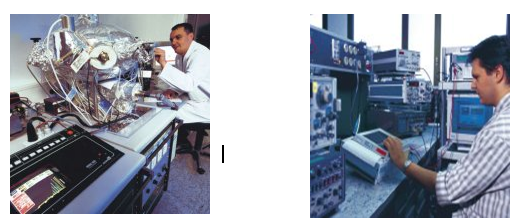
Description of the Radio network:
GP has 36 frequency channels in the GSM band and an additional 36 frequency channels in the DCS band. The actual spectrum is 7.4 MHz GSM between 907.6 and 915 MHz, and 7.2 MHz DCS spectrum between 1720 and 1727.2 MHz.
The TRU channels are re-used often in different base stations, but must be separated by enough distance so that two TRUs using the same frequency channel do not interfere with each other. In most cases, a base station has three sectors with at least one transceiver unit (TRU) in each sector. GP uses two different types of cabinets for its base stations to hold the transceivers and processors. The older cabinets (no longer ordered) are designed to hold only a maximum of six TRUs total (shared between three sectors in any configuration). The newer cabinets have a capacity for 12 TRUs total. Based on the number of available frequency bands, one base station can support up to 4 TRUs in each of its three sectors, given enough cabinet space and transmission capacity. Two base stations can be co-located (one GSM and one DCS) so that there are effectively 8 TRUs in each sector.Other constraints to consider are that GSM TRUs cannot share the same cabinet as DCS TRUs, and the GSM bands have a larger footprint than the DCS bands. In locations where both GSM and DCS frequencies exist, the site is considered to be co-located, meaning two base stations in at least two cabinets at one location. Base stations are designed and built as required to achieve three objectives: coverage, capacity and quality. Coverage ensures mobility and connectivity, capacity is required to handle the growing traffic, and quality base stations are built to resolve frequency interference and weak signals. Physically, the 900 MHz (GSM) frequency range propagates with less signal strength loss further through space and obstructions than the 1800 MHz (DCS) range. For this reason, GrameenPhone uses GSM for coverage base stations and DCS for extra capacity and quality.
Description of the Transmission Network:
GrameenPhone has the authorization with its mobile license to build and maintain its own transmission infrastructure. This may include microwave radio links, optical fiber, or copper wire. The medium for each link is determined by the geography, microwave frequency availability, and the trade-off between the capital expenses (capex) versus the operational expense (opex) of leasing transmission capacity. In most cases, short low-capacity links are best created with MW links, while longer and larger capacity links are best created with fiber optic links.
It is desirable to create redundant capacity along a diverse path in the backbone network to prevent revenue loss due to cuts or other outages along the backbone route. The endpoints of the two diverse and redundant paths are joined together to form a logical ring so that any traffic inserted into the ring can be extracted at any other point as the traffic travels around the full ring. If a ring is cut, the traffic automatically loops back eliminating service interruption.
The bulk of GrameenPhone traffic is carried in three types of circuits within the backbone and access network: the Abis circuits, the Ater circuits, and the A- circuits. The Abis is a dedicated circuit that connects the transceiver units to their base station controller. Each TRU requires three time slots on the Abis. The Ater is a trunk between the BSCs and the TRCs. Ater circuits carry four full rate or eight half rate voice channels per time slot from the Abis circuits. The A- circuits are trunks that connect TRCs to MSCs, or MSCs to MSCs, or MSCs to other operators. Only one voice channel is carried in each time slot in the A- circuits. Figure shows the main circuits in the voice network.

Each new BTS and each new subscriber affects the transmission network. New BTSs require dedicated Abis circuits and new subscribers generate traffic that requires expansion of the Ater and the A- circuits.
BTS and Transmission Site Construction Manual:
Collect all existing specifications, standards and practices concerning BTS site construction into one single document. Propose enhancements to existing specifications, standards and practices based on Telenor standards and solutions.
- Review of Site Construction Manual
- Review of BTS Site Construction Manual by Planning, Implementation and Network Operation departments.
- Approval of BTS Site Construction Manual by CTO
- Review by Planning, Implementation and O&M
- Final Approval
Site Construction drawings:
For our contractors to be able to build sites according to our requirements and standards, we have to provide enough information for them to be able to fulfill this. The GrameenPhone site construction drawings package shall contain the following categories:
- Site location map
- Site development plan
- Building/land layout
- Room/cabin/tower foundation
- Trenching and drainage layout
- Outdoor RBS/cabin load bearing system
- Antenna mounting structure
- Antenna mounting details
- Outdoor telecom installation layout
- Lightning protection and antenna feeder cable earthling
- Equipment room layout
- Electrical layout, including ducting
- Single line diagram
- Equipment grounding layout
One drawing of each category is normally not needed. Some categories can be combined into one drawing (for example “Site location map” can be combined with “Site development plan”), but normally a typical set of site construction drawings consists of 4-7 drawings. It can also happen that more than one drawing of a category is required for a specific site to be able to explain the issue accurately. Drawing size shall be A3. All drawings will contain references or indirectly relate to the standard detailed design drawings (made available to each Contactor before construction start). The drawings and design shall reflect current legal situation in Bangladesh. All drawings shall be approved by all relevant parties within GP prior to handover to contractor. All drawings in GrameenPhone shall be numbered and the number shall reflect who the owner is and what the drawing is. This is to ensure that misunderstandings and mixing of drawings occur.
Site folder
A site folder should be created in cooperation with Planning, SA, CW, RO and NO. This is to assure that each department is given the opportunity to influence the structure as well as the content of a site folder. Each department should have a listing of the required inputs and outputs to/from the other departments. The site folder shall always have the correct/updated version of the documents. One should avoid having “personal” databases on the personal computer. No tasks are considered to be completed unless all related documents are in place.
- Site folder – Hard copy (Located in Head Office/ Dhaka)
- Access description (Keys, coordinates, caretaker (janitor), landlord, site details, photos, etc.)
- Radio plan (Cell relations, No. TRU, etc.) Both provisional and final version.
- Transmission plan (Link budgets, etc.) Both provisional and final version.
- Site Acquisition Report
- Lease Agreement and the signed pre Lease Agreement
- Work Order
- TR report
- Kickoff protocol
- SPD ( State Of Premises document)
- Reviewed/Commented drawings based on TR report
- Bill Of Quantities (BOQ)
- Final Site Construction Drawing
- Change Order form
- Checklist – Civil Works and related snag list (And any clearing report)
- Construction related certificates as per specification
- Power connection documentation
- Checklist – Rollout (Technical Installation)
- As Built drawings (Updated to reflect the actual installation)
- Commissioning and test reports
- Integration report
- Pictures from Civil Works and Telecom Installation
- Final Acceptance protocol and related snag list (and any clearing report)
- This sections structure will be dependent on the coming data base
- Access description (Keys, coordinates, janitor, landlord, site details, photos, etc.)
- Radio plan (Cell relations, No. TRU, etc.) Both provisional and final version.
- Transmission plan (Link budgets, etc.) Both provisional and final version.
- Site Acquisition Report
- Lease Agreement and the signed pre Lease Agreement
- Work Order
- TR report
- Integration report
The process of rolling out the GrameenPhone BTS network can be illustrated with the following process flow:
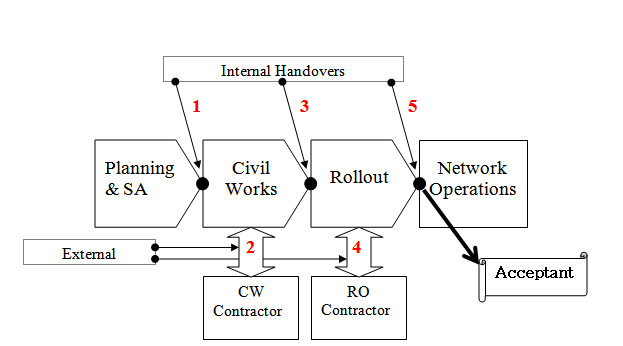
Technical Review (TR)
When Site Acquisition has found a candidate which meets the requirements made by radio planning, the site visit is scheduled. The technical review shall have representatives from: Site Acquisition, Radio Planning, Transmission planning, Civil Works, the appointed construction contractor and a representative from the site owner or someone empowered to make lease and design decisions.
Site Acceptance and Handover to Network Operations:
After a successful integration of the new network element, Network Operations is requested to perform the acceptance. The first step in the acceptance process is the Stability Test Period (STP) and it starts after the new network element is successfully integrated to the network.
The Stability Test Period is 24 hours, in which OMC will extract BTS PCM link data from AXE and it is considered successful if performance is compliant with the standard defined by BSS. The on-site work for the Stability Test Period will be started by Implementation, but will be completed by Network Operation personnel.
Following the Stability Test Period there will be a period of maximum seven days for acceptance preparations, such as collection of all needed documentation for Preliminary Acceptance Test.
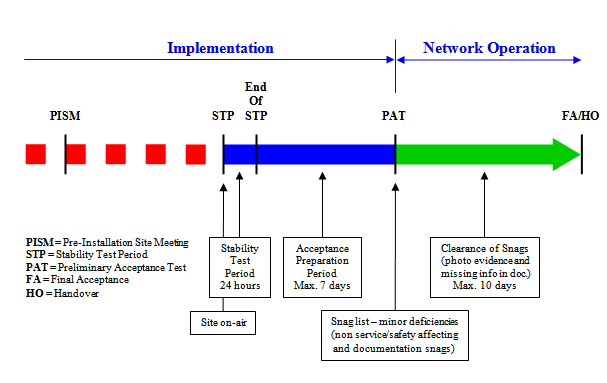
GrameenPhone Fiber Optic Network:
GrameenPhone is one of the largest mobile Company of Bangladesh. It has more than 6 million subscribers and country wide radio and transmission network. Optical fiber plays a very important role in Grameenphone transmission network. Optical fiber has created the most important part of the backbone ring. At the same time optical fiber has been used to have new coverage. Both BTS and trunk traffics are connected by this optical fiber. Almost the whole fiber network is built by single pair of fiber and this fiber runs along the rail track and Highway track.
Optical fiber
A flexible optically transparent fiber usually made of glass or plastic, through which light can be transmitted by successive internal reflections.
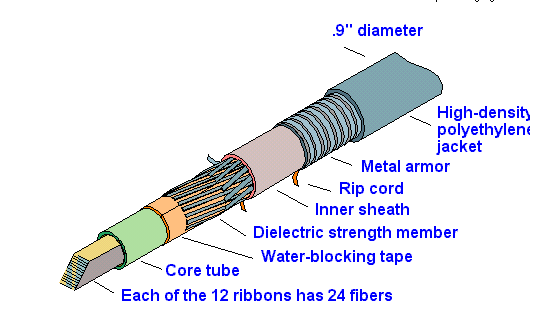
A single hair-thin fiber is capable of transmitting trillions of bits per second. In addition to their huge transmission capacity, optical fibers offer many advantages over electricity and copper wire. Light pulses are not affected by random radiation in the environment, and their error rate is significantly lower. Fibers allow longer distances to be spanned before the signal has to be regenerated by expensive “repeaters.” Fibers are more secure, because taps in the line can be detected, and lastly, fiber installation is streamlined due to their dramatically lower weight and smaller size compared to copper cables.

Advantages of Fiber Optic Communication
- Cables can be All Dielectric
- Large Bandwidth
- Low Loss
- No Electromagnetic Interference
- Small Lightweight Cables
- Available in Long Lengths
- Suitable for Data, Voice and Video
- Today’s Communications Applications
- Common Carrier Nationwide Networks
- Telephone Interoffice Trunk Lines
- Telephone Feeder/Subscriber Lines
- Customer Premise Communications Networks
- Undersea Cable
- High EMI Areas (Power Lines, Railroads)
- Factory Communications/Automation
- Control Systems
- Explosive Environments
- High Lightning Areas
- Military Applications
- Classified (Secured) Communications
- Intelligent Transportation Systems/
- Traffic Control
Technology of Optical fiber Communication
An optical fiber is constructed of a transparent core made of nearly pure silicon dioxide (SiO2), through which the light travels. The core is surrounded by a cladding layer that reflects light, guiding the light along the core. A plastic coating covers the cladding to protect the glass surface. Cables also include fibers of Kevlar and/or steel wires for strength and an outer sheath of plastic or Teflon for protection.
For glass fibers, there are two “optical windows” where the fiber is most transparent and efficient. The centers of these windows are 1300 nm and 1550 nm, providing approximately 18,000GHz and 12,000GHz respectively, for a total of 30,000GHz. This enormous bandwidth is potentially usable in one fiber. Plastic is also used for short-distance fiber runs, and their transparent windows are typically 650 nm and in the 750-900 nm range.
There are two primary types of fiber. For intercity cabling and highest speed, single-mode fiber with a core diameter of less than 10 microns is used. Multimode fiber is very common for short distances and has a core diameter from 50 to 100 microns. See laser, WDM, fiber optics glossary and cable categories.
Optical fiber in GrameenPhone:
GrameenPhone acquired the optical fiber network of Bangladesh Railway (BR), back in 1997 through a lease contract for 20 (twenty) years from the date of signing for the purpose of building a nation –wide telecom backbone infrastructure for its own use. Recently the contract was reviewed and extended for another 10 (ten) years.
Fiber length & capacity:
The total length of GP’s Optical Fiber is now 2009km and the maximum capacity is STM-16(2488 Mbps, 1008E1 PCM). Initially GP took lease from Bangladesh Railway 1616km and the maximum capacity was STM-4(622Mbps, 252 E1 PCM). Later GrameenPhone expanded and upgraded this Optical fiber network. Additionally GrameenPhone have his own 600km Optical fiber network on highway track. GP also use Metro link fiber for providing indoor coverage in high-rise building.
Network quality:
Data traffic of Grameenphone is growing at an explosive rate. Transmission speeds need to increase in line with this trends. So Grameenphone needs high performance transmission media and fiber-optic has been the adoption of this response. Presently GrameenPhone using 32 pairs fiber optic cable. The quality of Data doest not distorted where fiber optic communication is used.
Network Maintenance:
GrameenPhone Field Operation department is responsible to monitor and maintenance of fiber optic network. Field Operation has five regional field operation units where more than 200 employees are responsible for rectification of all types of fiber optic network faults. Field operation uses the following type of tools for fiber maintenance
- OTDR (Out door fault locator).
- Fusion splicing M/C (Used for the spliced of two different fiber).
- Dope( To secure the OF joint)
- Diamond Cutter (to sharp the OF).
- Smouve (To protect the OF joint).
- Blower (Used to hit sink the DOPE to make water tight)
- Special type Resin clip. (to make the dope water tight)
- Sub-leasing of GP fiber optic network capacity:
Customer satisfaction about the Grameenphone network.
Are you satisfied using the GP network?
One-Sample Statistics
| N | Mean | Std. Deviation | Std. Error Mean | |
| SATISFIE | ||||
| 35 | 1.4571 | .5054 | 8.543E-02 |
One-Sample Test
| Test Value = 35 | ||||||
| t | df | Sig. (2-tailed) | Mean Difference | 95% Confidence Interval of the Difference | ||
| Lower | Upper | |||||
| SATISFIE | ||||||
| -392.619 | 34 | .000 | -33.5429 | -33.7165 | -33.3692 |
Analysis: In this question test the mean is 1.457. The standard deviation 0.5054 and standard error mean 8.543. In the 95% confidence level lower value in -33.716 and upper value is -33.369. It is one tail test so we can say the Grameenphone customers are not satisfied using the connection. Because standard error is high than the standard deviation. On the other hand the confidences level different very low about the question.
If no why are you still using GP?
One-Sample Statistics
| N | Mean | Std. Deviation | Std. Error Mean | |
| STILL | ||||
| 35 | 2.0000 | 1.2127 | .2050 |
One-Sample Test
| Test Value |
= 35 tdfSig. (2-tailed)Mean Difference95% Confidence Interval of the Difference LowerUpperSTILL-160.99134.000-33.0000-33.4166-32.5834
Analysis: In this question test the mean is 2.00. The standard deviation 1.2127 and standard error mean 0.2050. In the 95% confidence level lower value in -33.4166 and upper value is -32.5834. It is one tail test so we can say the Grameenphone customers are using the connection. So we can say the customer using Grameenphone connection. The confidences level differences Lowe part are high.
Do you think GP net work is Quality full?
One-Sample Statistics
| N | Mean | Std. Deviation | Std. Error Mean | |
| QUALITY | ||||
| 35 | 3.8571 | .8452 | .1429 |
One-Sample Test
| Test Value = 35 | ||||||
| t | df | Sig. (2-tailed) | Mean Difference | 95% Confidence Interval of the Difference | ||
| Lower | Upper | |||||
| QUALITY | ||||||
| -218.000 | 34 | .000 | -31.1429 | -31.4332 | -30.8525 |
Analysis: In this question test the mean is 3.857. The standard deviation 0.8452 and standard error mean 0.1429. In the 95% confidence level lower value in -31.142 and upper value is -30.852. It is one tail test so we can say the Grameenphone customers are Agree the quality is good. Because standard error is lower than the standard deviation. On the other hand the confidences level different very high about the question.
When you become unhappy is using the GP connection?
One-Sample Statistics
| N | Mean | Std. Deviation | Std. Error Mean | |
| UNHAPPY | ||||
| 35 | 2.3429 | .8382 | .1417 |
One-Sample Test
| Test Value = 35 | ||||||
| t | df | Sig. (2-tailed) | Mean Difference | 95% Confidence Interval of the Difference | ||
| Lower | Upper | |||||
| -230.506 | 34 | .000 | -32.6571 | -32.9451 | -32.3692 |
Analysis: In this question test the mean is 2.3421. The standard deviation 0.8382 and standard error mean 0.1417. In the 95% confidence level lower value in -32.945and upper value is -32.39. It is one tail test so we can say the Grameenphone customers are unhappy when see the balances. Because standard error is lower than the standard deviation. On the other hand the confidences level different very low about the question.
Do you have any problem when you talk other operator?
One-Sample Statistics
| N | Mean | Std. Deviation | Std. Error Mean | |
| PROBLEM | ||||
| 35 | 1.8286 | .3824 | 6.463E-02 |
One-Sample Test
| Test Value = 35 | ||||||
| t | df | Sig. (2-tailed) | Mean Difference | 95% Confidence Interval of the Difference | ||
| Lower | Upper | |||||
| -513.212 | 34 | .000 | -33.1714 | -33.3028 | -33.0401 |
Analysis: In this question test the mean is 1.828. The standard deviation 0.3824 and standard error mean 6.463. In the 95% confidence level lower value in -33.3028 and upper value is -33.0401. It is one tail test so we can say the Grameenphone customers say now problem talk other operator. Because standard error is lower than the standard deviation. On the other hand the confidences level different very low about the question. So customers are 95% confident about the question.
Do you think GP network coverage is good?
One-Sample Statistics
| N | Mean | Std. Deviation | Std. Error Mean | |
| COVERAGE | ||||
| 35 | 3.9429 | .5913 | 9.994E-02 |
One-Sample Test
| Test Value = 35 | ||||||
| t | df | Sig. (2-tailed) | Mean Difference | 95% Confidence Interval of the Difference | ||
| Lower | Upper | |||||
| COVERAGE | ||||||
| -310.758 | 34 | .000 | -31.0571 | -31.2602 | -30.8540 |
Analysis: In this question test the mean is 3.942. The standard deviation 0.5913 and standard error mean 9.994. In the 95% confidence level lower value in -31.260 and upper value is -30.854. It is one tail test so we can say the Grameenphone network coverage is good customers are not satisfied using the connection. Because standard error is high than the standard deviation. On the other hand the confidences level different very high about the question. So most of the respondent say the Grameenphone coverage good.
Do you think GP provide crystal clear sound?
One-Sample Statistics
| N | Mean | Std. Deviation | Std. Error Mean | |
| CLEAR | ||||
| 35 | 3.4857 | 1.0109 | .1709 |
One-Sample Test
| Test Value = 35 | ||||||
| t | df | Sig. (2-tailed) | Mean Difference | 95% Confidence Interval of the Difference | ||
| Lower | Upper | |||||
| CLEAR | ||||||
| -184.437 | 34 | .000 | -31.5143 | -31.8615 | -31.1670 |
Analysis: In this question test the mean is 3.485. The standard deviation 1.0110 and standard error mean 0.1709. In the 95% confidence level lower value in -31.861 and upper value is -31.167. It is one tail test so we can say the Grameenphone network provides the crystal clear sound. Because standard error is lower than the standard deviation. On the other hand the confidences level different very low about the question. So most of the respondent said the Grameenphone provide the crystal clear sound.
When talk with GP sometime call can disconnect?
One-Sample Statistics
| N | Mean | Std. Deviation | Std. Error Mean | |
| DISCONTE | ||||
| 35 | 2.5429 | .8859 | .1497 |
One-Sample Test
| Test Value = 35 | ||||||
| t | df | Sig. (2-tailed) | Mean Difference | 95% Confidence Interval of the Difference | ||
| Lower | Upper | |||||
| DISCONTE | ||||||
| -216.743 | 34 | .000 | -32.4571 | -32.7615 | -32.1528 |
Analysis: In this question test the mean is 2.5429. The standard deviation 0.8859 and standard error mean 0.1495. In the 95% confidence level lower value in -32.761 and upper value is -32.1528. It is one tail test so we can say the Grameenphone network some time disconnect. Because standard error is higher than the standard deviation. On the other hand the confidences level different very low about the question. So most of the respondent said the Grameenphone call most of the time disconnect.
Any where you can talk with the GP connection.
One-Sample Statistics
| N | Mean | Std. Deviation | Std. Error Mean | |
| ANYWHERE | ||||
| 35 | 3.1429 | .8096 | .1368 |
One-Sample Test
| Test Value = 35 | ||||||
| t | df | Sig. (2-tailed) | Mean Difference | 95% Confidence Interval of the Difference | ||
| Lower | Upper | |||||
| ANYWHERE | ||||||
| -232.791 | 34 | .000 | -31.8571 | -32.1353 | -31.5790 |
Analysis: In this question test the mean is 3.142. The standard deviation .0895 and standard error mean 0.138. In the 95% confidence level lower value in -32.1353 and upper value is -31.5790. It is one tail test so we can say through the Grameenphone network can not talk any where but because the most of the customer can not comment about the question. Because standard error is higher than the standard deviation. On the other hand the confidences level different high about the question. So most of the respondent can not agree the question.
Do you think GP increase their network quality day by day?
One-Sample Statistics
| N | Mean | Std. Deviation | Std. Error Mean | |
| INCREASE | ||||
| 35 | 2.6000 | .6039 | .1021 |
One-Sample Test
| Test Value = 35 | ||||||
| t | df | Sig. (2-tailed) | Mean Difference | 95% Confidence Interval of the Difference | ||
| Lower | Upper | |||||
| INCREASE | ||||||
| -317.401 | 34 | .000 | -32.4000 | -32.6074 | -32.1926 |
Analysis: In this question test the mean is 2.600. The standard deviation 0.6039 and standard error mean 0.1021. In the 95% confidence level lower value in -32.6074 and upper value is -32.1926. It is one tail test so we can say Grameenphone network quality can not increase day by day. Because standard error is lower than the standard deviation. On the other hand the confidences level different near about same about the question. So most of the respondent can not agree the question
Recommendation and Conclusion.
Recommendation:
- Under the JSC more than 300 site of the Grameenphone. Only 6 engineers are work on the JSC. So the is difficult to maintain the site properly. If the bad weather when the more side damages then they can not doing work as per as requirement. So the Grameenphone is multinational company so they can provide the more engineer on the JSC.
- Generator distribution not proper way on the JSC site. Some core side only provides the generator. So other side not needs the generator. But higher authority can not concern about that matter. The remote site where has the generator but it is high cost is that site provide 2 set extra battery they good for the Grameenphone. In the process Grameenphone save the more money.
- I can saw some side 1 set battery when the commercial power gone then the side very son down. If the side provide the two set battery they that’s side can not down. On the other hand provide more module for that side the batter can charge very early the side can run more than 3hr if commercial power gone.
- Ac distribution is the big problem for the GrameenPhone. My internship time I see some side only RBS but that’s side kept 3 ton AC. It is not need for the side. On the other hand some side needs two AC but has one AC that side. It is better for the GrameenPhone if they can alternative option for AC.
- Civil work problem every side when the side build up then which side kept the AC they can not think about that. Some side I can see the AC always hot because their is no place to come out the hot air? Some side kept Ac on sunshine. That’s cose Very early AC can damage. Some the civil people work inside the BTS room but they can not the clean the room. It is ban for the BTS beautification.
Recommendation (Part2) :
Grameenphone is the largest mobile operator in Bangladesh. They can height coverage in the country although has some problem on the Grameenphone network. Most of the respondent said the Grameenphone network can not develop day by day. So the network quality is increase very soon. Some respondent said Grameenphone can say on some occasion more busy. So the Grameenphone customers are not satisfied. The for the customer satisfaction Grameenphone needs more quality full network coverage.
Conclusion:
GrameenPhone Ltd is still a growing company, in spite of all the success it has achieved so far. It holds kind of a monopoly position in the mobile telecommunications market. However, it cannot afford to get complacent. Competition is always on the lookout for new ideas and schemes. In order to maintain its number one position in the market, it is imperative that GP focus on the people who matter most to the companies- the people. Now the various dealers, distributors, outlets, and/or agents are GP’s representatives to the people. It is the impression that these individuals create that will influence people’s impression of GP. It is thus highly important for GP to act favorably towards these individuals, give them as much support and assistance as possible. GP must make time to hear the feelings and views of these individuals.
In order to be a successful company, GP must take care of all its employees, no matter how small they are. It is these employees that make up GP. GP must make it so that these dealers and agents can proudly say that they belong to the family of GrameenPhone. As the multinational company the Grameenphone doing the good business in the Bangladesh. They has more scope in the country to gain the more revenue. Hopefully the Grameenphone doing the better modern equipment for their network.
